|
Do you
have a vintage door chime that needs renovation? I would be
pleased to provide you with an estimate for my services.
Honestly,
I really enjoy working on these and would almost do it for
free, but I really need to charge to justify taking time away
from my other so-called responsibilities, you know, like working
for a living or renovating the KNOCK World Headquarters Building
( aka, The Humboldt County Center for Deferred Maintenance).
All work is bid based on my estimate of time involved x $50/hr
If you have
read all Tech Advice topics on this site (soon to be moved
over from my old site www.eurekamodern.com)
you should have a pretty good guide to do your own DYI repair
job. I encourage people to do their own simple repairs, or
even complex repairs if they have experience with servicing
delicate devices. Word of warning though... so far I have
run into very few chimes that I could not fix. A. few of these
were victims of a prior repair experiment that went horribly
wrong - and one of those was at the hands of a professional
clock repair shop. My advice is that if you have a chime you
really care about, the story will probably end better if you
just send it to me.
I’m
glad to discuss your DYI project, but please read the tips
on this site first because most of the typical problems are
already covered here. Feel free to write to tell me how wonderfully
it all went. Please, if you write with a question about your
chime, include a picture of the chime, inside and out, and
describe sort of what’s going on.
I frequently
get email from people who say they have a bad transformer,
or maybe bad wiring, or a bad chime but just not sure where
the problem is... and can I help them figure it out? It's
almost impossible for me to diagnose a chime or house wiring
by remote control. Here's my advice for anyone who wants to
debug their own. Like any multi-variable system, whether its
an algebraic equation or fixing your car, the variables need
to be solved for one at a time. My own chime test station
consists of a miniature of a house door bell circuit, with
110v into a transformer of correct voltage, door bell buttons
and appropriate wires. With this set up I can see all the
parts, I can identify each one for sure, and I know that all
are wholesome. If you make a set up like this, you can at
least isolate the problem to your chime, or outside your chime,
plus you can determine the correct connection scheme by quick
trial and error if necessary.
If you
are not inclined to tackle the project on your own, perhaps
you need help. For clock repair, I recommend that you see
a local clock repair shop. For chime mechanism repair, bell
refinishing or cosmetic restoration, that would be me. I do
basic repair as a humanitarian service to people stuck in
a crack, but my joy and special skill is in making these things
as beautiful as they once were, or perhaps a bit more so.
If you
have found my site seeking help for an ailing chime, the following
bit of advice may be too late, but I offer it in the hopes
of helping someone avoid troubles. Aside from age, chimes
have only two natural enemies-- children and contractors.
Assuming you like your children better than your chime, I
can't help much with that problem. As for contractors, grab
your chime by the bells and take matters into your own hands.
It's just not realistic to expect a painter to think that
your dusty old chime has any particular value and exercise
due diligence. Don't for a minute think that a contractor
is either going to know as much or care as much about your
old doorbell than you do. Typically painters will leave a
chime in place and try to paint around it, invariably getting
paint slop on everything in sight. Or they might knock the
cover off and break it. If he removes the chime, he will invariably
miss the crucial step of marking wires so that the chime can
be reinstalled without tedious trial and error wire swapping.
Do yourself a favor and remove the chime to an out of the
way place before he arrives and reinstall it yourself after
the paint is dry.
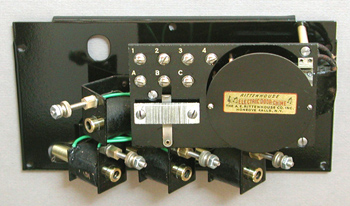 |
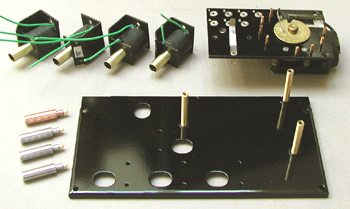 |
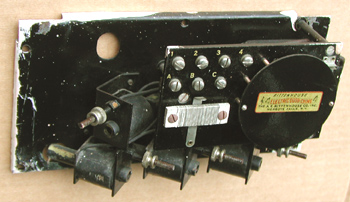 |
| 1937
Rittenhouse mechanism before, during and after complete
renovation. |
|
.
|
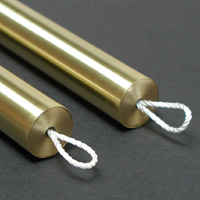 |
New
bell hanger loops made from braided nylon to exact length
needed for a perfect stike.

|
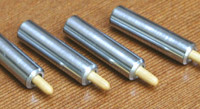 |
Solenoid
plungers polished for super smooth action, and new strike
pins added.

|
|




